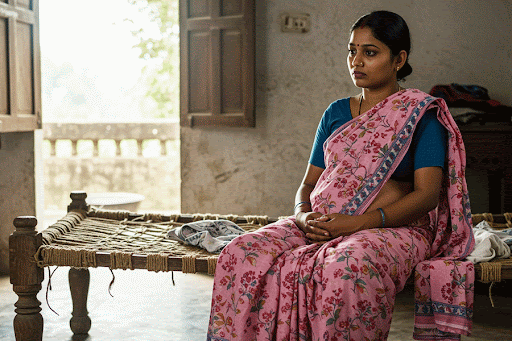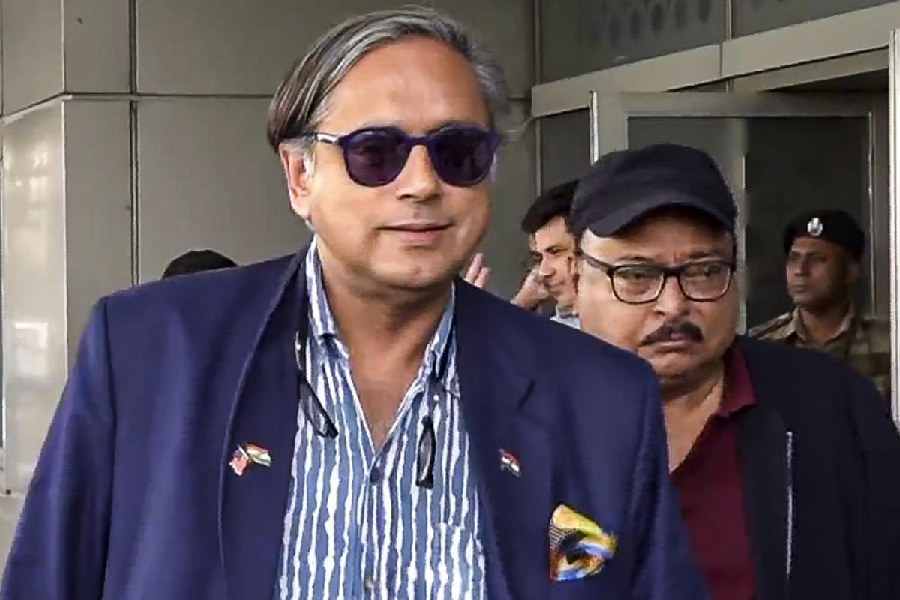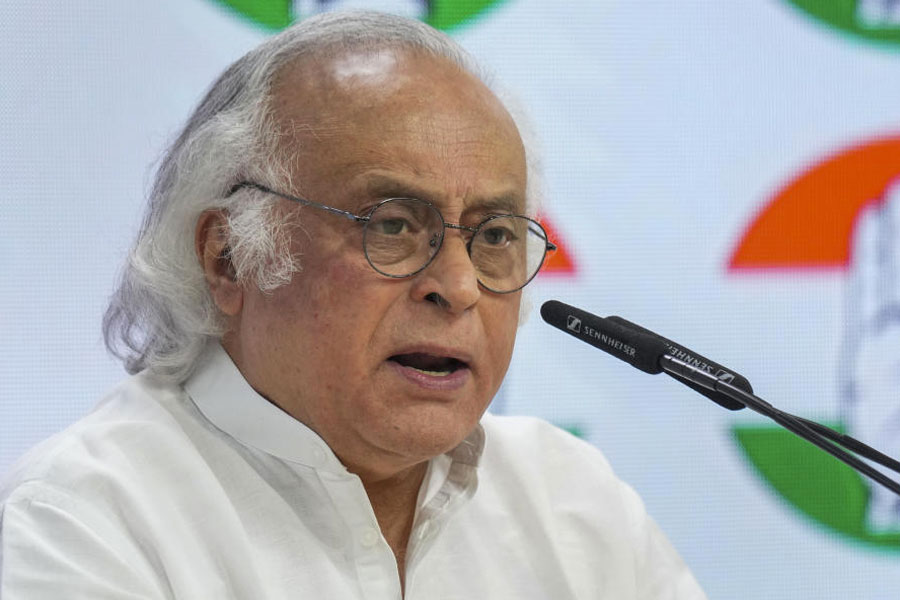 |
| Amal Ghosh with wife Iris Hudson at their Dum Dum home. Picture by Aranya Sen. (Below) A panel of vitreous enamel done by Ghosh in London |
For a little more than a decade, artistic circles in Calcutta have become familiar with two birds of passage who winter in Calcutta, when cultural activity peaks here. As February sets in, they return to their home in London, which is a home away from home for many Indian artists and students.
Iris and Amal Ghosh are both practising artists and former teachers in “name” art colleges in London. They have held exhibitions of their work in the city, and Amal Ghosh continues to take classes in vitreous enamel at his alma mater, the Indian Art College, Rabindra Bharati and Kala Bhaban, where it is a subject in the curriculum.
Ages ago, when he was himself an art student in London, he had created Calcutta’s first mosaic mural in a bank building in the Dalhousie Square area, and more recently, he executed an enamel mural in the new ITC building on Russell Street.
Amal Ghosh’s family is originally from Baragram in Serampore, but they had moved to Calcutta for sometime, as most of them were professionals. As a child he used to take lessons in art at the homes of Tilak Bandopadhyay and Annada Munshi, but when he wanted to join art school, he was forced by his family to join RG Kar Medical College as a student. He managed to wriggle out of that, but he was a year too old to join art college. However, the then principal, Ramen Chakrabarty, allowed him to do so later.
Ghosh had spent several years of his childhood in a Nagpur school, where he was deeply influenced by a Portuguese teacher and linguist named Father Montero. The beautiful stained glass windows in the chapel made such a strong impression on him that he wanted to create them himself.
So, way back in 1959, he joined the London Central School of Art and Design, where he learnt vitreous enamel, painting and stained glass. Subsequently, he was employed in the college, later renamed as the well-known Central St Martin College of Art, as a teacher. During his student days he had become friends with David Hockney and Kitaj.
Iris, who is a native of Essex, had already passed out from Leeds University, where she read economics and sociology. She post-graduated in Bradford, and was researching at the London School of Economics, when she met Amal, who used to visit the LSE canteen for his meals, through a common friend.
Iris already practised painting in private, and she was talented enough to enrol herself as a student at Central School of Art. Iris remembers an encounter with Quentin Crisp, who modelled there. He was clad in a red robe and nothing underneath. Iris Hudson and Amal Ghosh got married in 1975.
Later she joined Beckenham Art College, where she taught enamels, stained glass and jewellery making. An accident, which injured her right arm, forced her to leave that job and join a college for further education. Yet she continued to paint as she was ambidextrous.
Iris’s paintings speak with a barely audible voice but they do have touches of glowing jewel colours. “I cover up what I have done. I start off from all sorts of inspirations — shadows, moods — which gradually get covered over.” Both have worked together on eight large vitreous enamel in London, which Ghosh describes as the “perfect medium” for Calcutta.
In Calcutta, they live in their flat in Dum Dum and regret its rapid urbanisation. But Iris admits that now “I feel comfortable in Calcutta. Initially I didn’t. We are privileged to meet nice people.”
She has became familiar with the soundscape of her neighbourhood — the dogs barking, the hawkers, the quilt makers, the frogs and crickets and neighbours rowing.










